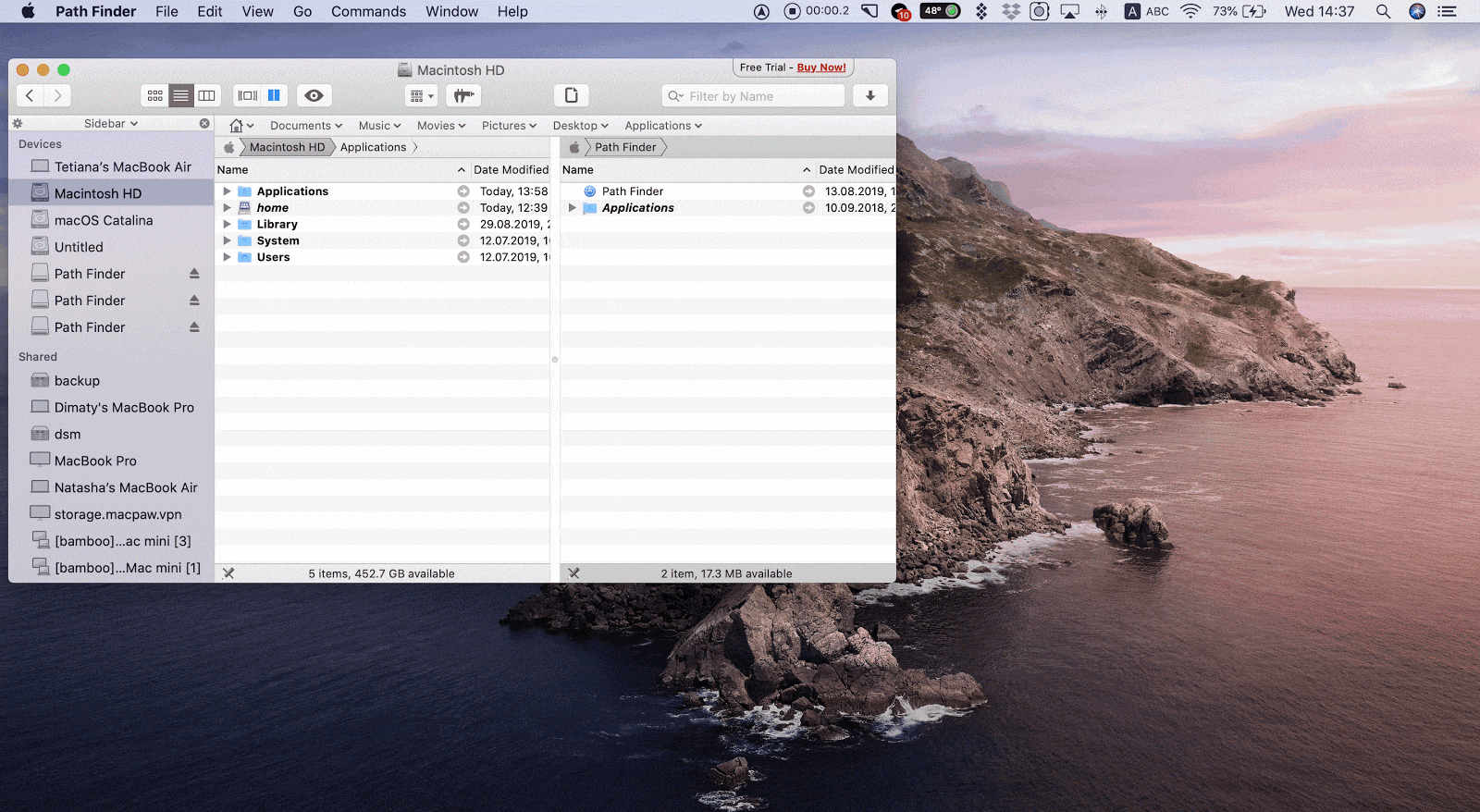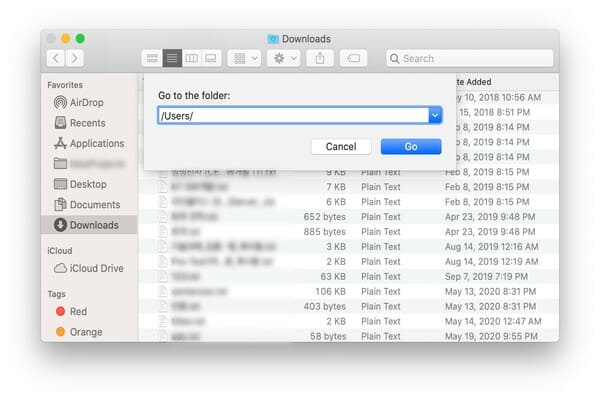

Enter the following command(note: this command involves relaunching Finder, so while you won’t lose any data, all of your open Finder windows will be closed, so make sure you take note of your current Finder locations if you’re actively working on a file-focused project):ĭefaults write _FXShowPosixPathInTitle -bool true killall FinderĪs mentioned in the note above, all of your current Finder windows will close and the app will relaunch.

PATH FINDER MAC FULL
In our example above, since we had navigated to Data > Dropbox > TekRevue > Articles, the title of our Finder window was “Articles.”īut there’s a hidden Terminal command that lets you display the full path in that title bar instead of simply the active folder (very similar to how Apple now treats website addresses in Safari).

Show the Path in the Finder Title Barīy default, the “title” of any given Finder window is the name of the actively selected directory. But there’s another option for showing your current location in Finder that may be even better depending on your experience and needs. If we wanted to quickly move that file to the main Dropbox folder, we could simply drag and drop it on “Dropbox” in the path bar.Īlthough it’s disabled by default, we personally find great use in Finder’s path bar, and it’s one of the first things we enable when setting up a new Mac. Again, for example, the Finder window in our screenshot has a text document called “Article Ideas” in the Articles subfolder. If you want to see the full path of a file or folder on Mac, you have a few easy ways to do so, as well as copying that path to your clipboard.By becoming familiar with the path bar, you can quickly understand the relative locations of your various files and folders, as well as easily move files to a location higher up in the path chain. Step 3: Right-click and choose Copy to place the path on your clipboard and paste it where needed. You’ll then see the file path display in the window. Step 2: When the Terminal window opens, drag your file or folder into it. Step 1: Open Terminal as you normally would or by going to the Utilities folder and selecting the application. If you’re a fan of using Terminal to perform actions on your Mac, then you can use this app to display and copy a file path as well. With the path on your clipboard, you can paste it where you like. Step 4: From there, select the path and either use Command + C or right-click and pick Copy. You’ll then see the path for the item in that field. Step 3: Drag your file or folder into the Search bar at the top of the window. Step 2: When the window opens, select the X on the right side of the Search bar to clear the field if necessary. Step 1: With Finder active, select Go > Go to folder from the menu bar. But this nifty tool can also provide the file path of an item. You may only think of opening Finder’s Go To Folder tool when you need to navigate somewhere on Mac. The path should display correctly with the arrows replaced by forward slashes. Step 5: With the path on your clipboard, you can then paste it where needed. Step 4: Press Command + C to copy the path or right-click and choose Copy as Pathname. Drag your cursor through the path to highlight it. Step 3: When the Get Info window opens, expand the General section at the top and you’ll see the file path next to Where. Step 2: Press Command + I or right-click and pick Get info. Step 1: Select the item on your desktop or in Finder. File paths in Get InfoĪnother convenient location to view and copy a file path is with the Get Info tool. The file path is then on your clipboard for you to paste where you wish. Step 5: Hold the Option key while the context menu is open and select Copy as Pathname. Step 4: To copy the file path, right-click the item in Finder to display the context menu. Step 3: You’ll then see the path display at the bottom of the Finder window.
PATH FINDER MAC HOW TO
How to combine PDF files on Windows, macOS, or the webĪpple just gave Mac gamers a big reason to be excited


 0 kommentar(er)
0 kommentar(er)
